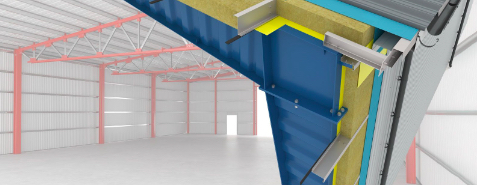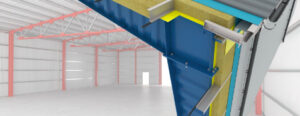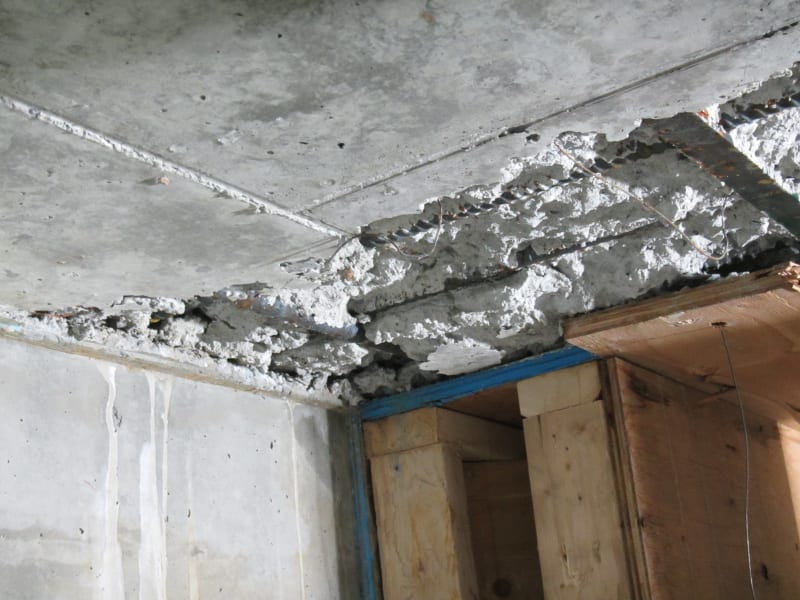Home water damage is an unfortunate and costly problem. Left untreated, it can lead to everything from blistered paint and swollen window frames to impacted electrical items and rotting wood.
Potential causes include broken dishwasher hoses, overflowing washing machines, plumbing leaks, flood waters, and groundwater seepage. There are several classes of water damage, ranging from Category 1 to Category 3. The higher the number, the more unsanitary and dangerous the water is. Visit https://www.infinity-construct.com/ to learn more.
If left untreated, water damage can lead to serious structural and health problems. Water can rot wood and cause foundation problems, and it may also encourage mildew and mold growth. Fortunately, there are many signs of hidden water damage that you can look for to identify potential problems.
One of the most common signs of water damage is water stains on walls or ceilings. This can occur due to a leaky roof or a broken pipe. If you notice any dark brown spots or rings on the wall, it’s important to have these inspected by a professional. It’s also a good idea to check for stains on the ceiling as well, particularly over rooms like bathrooms and bedrooms.
Another important sign of water damage is a musty or damp smell. This odour can be caused by mould, which is another common result of water damage. Mould and dampness can affect air quality, so it’s important to find the source of the problem as soon as possible.
Water damage can also cause warping of materials. Wood and drywall are two materials that are most susceptible to this issue. If you’re noticing any warping on the walls or floors of a home you’re thinking about buying, it’s essential to have these inspected by a professional before purchasing.
When examining water damage, it’s important to note how old the issue is as well as where it’s coming from. Hard materials such as concrete and brick can take a long time to show visible signs of water damage, while soft materials such as drywall and wood will show signs almost immediately. To determine the age of the damage, touch the affected area to see if it feels soft or mushy. If it does, the water damage is likely recent and could have happened as recently as a few days ago.
Water damage is a major concern when looking at homes, especially if the problem goes undetected for a long period of time. If you’re looking at a new home and notice any signs of water damage, it’s best to notify your inspector or save yourself the money and hassle of purchasing the property by striking it from your list.
Water Stains
When water is trapped and allowed to infiltrate a building, the damage can be catastrophic. Not only does it create a host of problems that can cause expensive repairs and replacements, but it also can lead to the growth of mold and mildew and even structural damage.
The good news is that there are many signs you can watch for to keep your building protected. The first warning sign is often a spot or stain on the ceiling that appears to be moisture or water-related. You may notice a stain that has been there a while, or it could appear to have suddenly appeared. Either way, it is important to treat any sign of moisture with urgency to prevent further damage.
Typically, water stains on the ceiling are caused by plumbing leaks. These can be from pinholes in solder joints, corroded steel pipes, or failed seals around toilets and sinks. Regardless of the source, a water stain on the ceiling should be immediately investigated to find and stop the leak.
Another common reason for a ceiling stain is condensation. This occurs in homes with poor ventilation and low humidity. You can tell if this is the problem in your building by noticing that the water stain is located under or near a vent, chimney, skylight, or dormer. It is also a good idea to check your water bill on a regular basis, as higher bills may be due to an undetected water leak.
Leaks involving appliances can occur when hoses become old or damaged and break, or when washers and refrigerators aren’t turned off before leaving for a vacation. Similarly, leaks in exterior walls and roofing systems can be the result of gutters being clogged with debris or failing roof drains.
In addition to reducing the risk of water damage by implementing preventative measures, commercial buildings can also minimize damage to their property by quickly responding to a water-related incident. If it is safe to do so, the affected building structures and systems should be shut off to stop the flow of water.
Mold or Mildew Growth
Fungi grow rapidly on wet surfaces, producing spores that travel through the air and may trigger health problems for you and your family. Inhaled spores from mold and mildew can cause a range of symptoms, including sneezing, runny nose, itchy eyes, irritated throat, coughing, respiratory issues, and more. These fungi can also cause serious structural damage to wood, wallpaper, carpets, and other surfaces.
Mildew and mold grow on any surface from which they can draw nutrients, which means that nearly anything can become covered in these growths if there is a sufficient amount of moisture and the right temperature conditions. In homes, mildew and mold usually develop on shower stalls and windowsills, but they can appear anywhere there is moisture and the proper temperatures.
While some people confuse mildew and mold, it is relatively easy to distinguish between the two. Mildew appears white or gray and has a powdery texture, while mold looks fuzzy or slimy, has a stronger musty odor, and grows in raised patterns as opposed to appearing flat.
If you suspect your home has a mildew problem, the first step is to get rid of any soiled clothing, blankets, or other fabrics. These should be washed thoroughly and dried quickly, ideally in sunlight or by using an electric dryer.
It’s essential to keep closets, dresser drawers and other storage areas as clean as possible, since dirt provides enough nourishment for mildew to thrive. Many synthetic fibers, including acetate, acrylic, polyester and nylon, resist mildewing, while cotton and wool tend to attract it.
You can reduce the likelihood of mildewing by keeping humidity low in damp rooms, and repairing leaky pipes as soon as you notice them. Dehumidifiers, fans and open windows can help with this.
Damage to Materials
Water damage can lead to long-term problems that are very difficult and expensive to repair. It causes rotting wood, mold growth, bacteria growth, rusting of steel and swelling of composite materials. It can also cause serious issues with your foundation and drywall. In addition, it can lead to electrical problems and short circuiting of electronics. It also leads to the growth of mildew, which can be a health issue for some people who are sensitive to it.
It can take some time for signs of water damage to become apparent, depending on how much water has gotten into the material and how porous it is. In many cases, the first sign is a musty odor or the appearance of water spots. Eventually, if left unattended, water damage can destroy all or part of a room or building.
If you notice any of these signs, call a professional right away. A professional will be able to assess the situation and give you an estimate for the cost of water damage restoration.
The IICRC uses categories to describe different levels of contamination in the water and its effects on materials. The categories are Clean Water, Grey Water and Black Water.
Clean water is usually clear and has little to no contaminants. It will dry quickly after it is removed. Gray water is dirty and has a higher level of contaminants than clean water. It may also have chemicals or biological contaminants in it, which can cause more extensive damage to materials. Black water is grossly contaminated and contains hazardous materials that could make you sick. This type of water can cause significant and irreparable damage to your home.
Water damage is a common problem for homes and businesses, especially in the summer. However, it can be prevented with a few simple steps. One way is to keep gutters clean so that debris doesn’t block the flow of water. Another way is to check pipes regularly and fix any that are leaking. You can also install a dehumidifier in your home or business to reduce the amount of moisture in the air.






 Many industrial operations generate hazardous waste materials. Hazardous wastes are a complex category of regulated wastes that must be handled and disposed of according to federal, state, and local regulations. In addition, the disposal of these wastes requires special precautions to prevent environmental damage. If not handled correctly, hazardous waste can lead to contamination of soil and water supplies. It can also harm human health, which may require emergency cleanup. To minimize the risk of environmental contamination, it is important to hire a rubbish removal service that specializes in handling and disposing of hazardous waste.
Many industrial operations generate hazardous waste materials. Hazardous wastes are a complex category of regulated wastes that must be handled and disposed of according to federal, state, and local regulations. In addition, the disposal of these wastes requires special precautions to prevent environmental damage. If not handled correctly, hazardous waste can lead to contamination of soil and water supplies. It can also harm human health, which may require emergency cleanup. To minimize the risk of environmental contamination, it is important to hire a rubbish removal service that specializes in handling and disposing of hazardous waste.




 Steel structures can be used to build various buildings, including warehouses, churches, storage centers, and even office spaces. They can also span longer distances, making them an excellent option for larger structures. Steel building frames can be designed to meet local area codes and load limits, which helps ensure that your new structure will be safe and up to code.
Steel structures can be used to build various buildings, including warehouses, churches, storage centers, and even office spaces. They can also span longer distances, making them an excellent option for larger structures. Steel building frames can be designed to meet local area codes and load limits, which helps ensure that your new structure will be safe and up to code.




 Site Preparation
Site Preparation